When I began my lectin-free and gluten-free journey in August 2017, I was astounded by the myriad of alternative flours available. What I now consider staples, like almond and coconut flour, were then uncharted territory for me. Recognizing the challenges beginners might face, I’ve compiled this easy guide to lectin-free and gluten-free flours.
After experimenting with numerous recipes over the years, I hope to share my knowledge about these flours: their origins, availability, and usage.
While I will provide basic nutritional information on each flour, I won’t delve deeply into nutritional specifics, as that’s a subject vast enough for its own piece. I’ll highlight whether flours are low-carb or high-carb, keto-friendly, or allergen-friendly, helping you tailor your choices to your dietary requirements.
Is gluten a lectin?
While every flour mentioned here is both lectin-free and gluten-free (since gluten is a type of lectin), it’s crucial to highlight that many popular gluten-free flours and mixes, like oat, potato, rice, quinoa, and chickpea flours, are heavy in lectins. Even almond meal, with its almond peels, has a significant lectin content.
If you’re steering clear of gluten due to celiac disease, rest assured that the flours listed below, when labeled ‘gluten-free’, are safe for consumption. However, be aware of cross-contamination risks and always opt for products processed in certified gluten-free facilities.
All these flours align with the PLANT PARADOX YES LIST, with a select few being keto-friendly, suitable for the Plant Paradox Keto Intensive Program. For a deeper understanding, refer to The Plant Paradox, by Dr. Steven Gundry for more details.
Types of lectin-free, gluten-free flours
My favorite way to categorize these flours is based on their source plants:
- The root flours: cassava, tapioca, arrowroot, tigernut, sweet potato
- The banana/vegetable flours: green banana, green plantain, cauliflower
- The lectin-free grain flours: sorghum, millet, teff, fonio
- The nut flours: almond, hazelnut, chestnut, walnut, coconut, pecan, acorn
- The seed flours: hemp, psyllium, flaxseed meal, sesame
Does buckwheat have lectins?
Many question buckwheat’s lectin content since it’s not a grain. While buckwheat is gluten-free, it isn’t entirely free from lectins. However, its lectins can be diminished through pressure cooking.
Where do you find lectin-free, gluten-free flours
For my US audience (and those using Amazon across the world), I’ll provide purchase links for each flour.
Flours like cassava, tapioca, almond, coconut, and even tigernut are readily available in stores like Whole Foods, Sprouts, Costco, and Walmart.
Making nut and seed flours is feasible at home using a milling blade and a food processor.
However, chestnut, sweet potato, and cauliflower flours can’t be made at home, but are accessible online.
For international readers, these flours are typically available online or in specialty sections in local stores.
Are the lectin-free, gluten-free flours healthy?
The answer isn’t straightforward. The safety of these flours hinges on several factors: your health, potential allergies, and metabolic flexibility.
In moderation and the right combinations, these flours are harmless for most. Those with conditions like diabetes should be wary of the blood sugar impact of these flours.
Relying solely on a flour’s glycemic index can be misleading since flours are often mixed with other ingredients that can affect this index. This is why I often blend these flours to achieve a nutritional balance.
Guide to lectin-free, gluten-free flours: root/starchy flours
Cassava flour
Derived from the yuca root—also known as cassava or manioc—cassava flour is a product of a starchy vegetable indigenous to South America. The root undergoes a process: it’s peeled, ground, and then either sun-dried or slow-baked to yield the flour.
If you’ve dined at a Brazilian restaurant, chances are you’ve tasted the famous Pao de Queijo, a Brazilian cheese bread made primarily from cassava flour.
Keto-Friendliness: While many hope cassava flour fits into a ketogenic diet, it’s not inherently keto-friendly. However, that’s not to say it can’t occasionally feature in a keto lifestyle, in small quantities. Generally, cassava-based products have a medium to high glycemic index, making them less suitable for those with diabetes.
Texture Variability: The consistency of cassava flour can differ depending on its origin. In Romania, for instance, I’ve encountered two types: the standard and a ‘super fine’ variant. While neither matches the pristine whiteness and fineness of brands like Otto’s cassava flour (a personal favorite available only in the US and Australia), they are both okay to work with.
It’s worth noting that the yuca root has multiple varieties, and the quality of the resulting flour can hinge on the specific type and the production process. One challenge presented by these variances is that recipe measurements might need adjustments, especially if the flour’s absorbency differs due to its dryness.
Culinary Uses: When combined with liquid, particularly warm water, cassava flour produces a pliable dough that’s a dream to handle. It’s ideal for making tortillas, diverse pizza crusts, and homemade gnocchi. And, of course, it’s the key ingredient for the Brazilian cheese bread, or its sweet potato vegan variation, Pao de Beijo.

Tapioca Flour and Arrowroot Flour
Derived from the yuca root, both tapioca and arrowroot flours are products of the starch extracted from this plant. This gives them a higher glycemic index, altering the way our bodies respond to and metabolize them.
Arrowroot flour used to be made exclusively from the arrowroot plant. However, today, the term ‘arrowroot flour’ often refers generically to starches derived from a variety of tropical roots, yuca (or cassava) included.
Further adding to the confusion, some regions use the terms cassava flour and tapioca flour interchangeably. In general, one can discern between them based on appearance: both arrowroot and tapioca resemble fine, white powders similar to potato or corn starch, whereas cassava flour has the appearance of finely milled root.
Wondering if arrowroot or tapioca flours are keto-friendly? In small quantities, they might fit the bill. For instance, adding a tablespoon to thicken a sauce or a bit more to a cake for improved texture can be compatible with a keto diet. That said, while they offer excellent baking results, I typically use them sparingly—either as components of lectin-free, gluten-free flour mixes or as thickeners for sauces.
In baking, these starches can enhance the texture of your creations. But if you’re aiming for lower glycemic recipes, it’s wise to use them judiciously. A few tablespoons can notably enhance the texture and consistency of lectin-free, gluten-free baking mixes, but the key is not to go overboard.
Both tapioca and arrowroot flours are readily available in the U.S., online and in brick-and-mortar stores. Moreover, tapioca starch is a frequent ingredient in gluten-free flour blends worldwide.
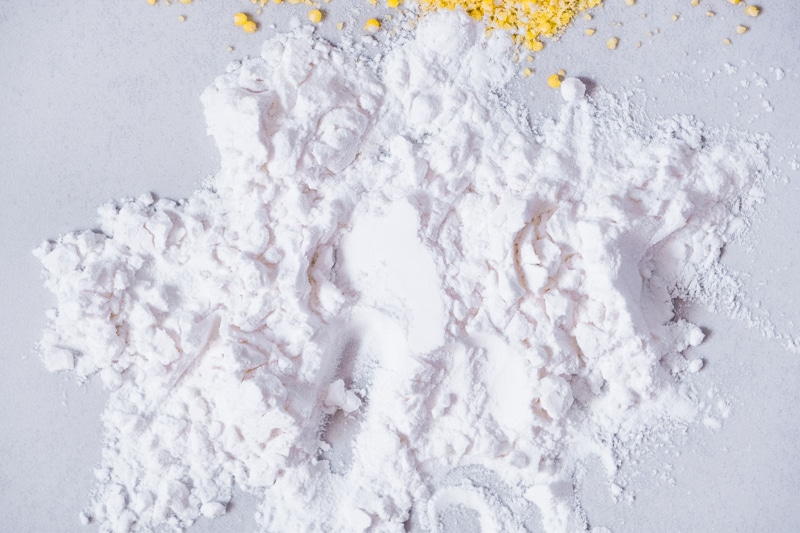
Tigernut Flour (Keto-Friendly)
Don’t let the name mislead you; tigernuts are not nuts. Instead, they’re tiny tubers harvested from the yellow nutsedge plant, cherished in regions like Africa, the Middle East, Southern Europe, and India.
For those navigating nut allergies or sensitivities, tigernut flour emerges as a promising alternative.
From a nutritional standpoint, tigernuts are lauded as a resistant starch and superfood, packed with an abundance of micronutrients.
Their natural sweetness and robust nutritional profile make tigernut flour my favorite to work with, especially for cakes. Mixed with almond flour and a hint of tapioca, it creates an exceptional lectin-free and gluten-free blend perfect for desserts.
This flour’s versatility doesn’t stop there. It’s suitable for baking, making porridge, or even blending with other flours like cassava for coatings on dishes like schnitzels and chicken nuggets. It can also serve as a binder in crab or fish cakes.
While its mildly gritty texture might not appeal to everyone, its health benefits make it a worthy addition to your pantry.
If you’re keen to explore the potential of this remarkable flour, check out my Guide to Tigernut Flour, featuring over 20 recipes to kickstart your culinary adventures. From crispy biscotti to fluffy pancakes and sponge cakes, there’s a wealth of dishes waiting for you.
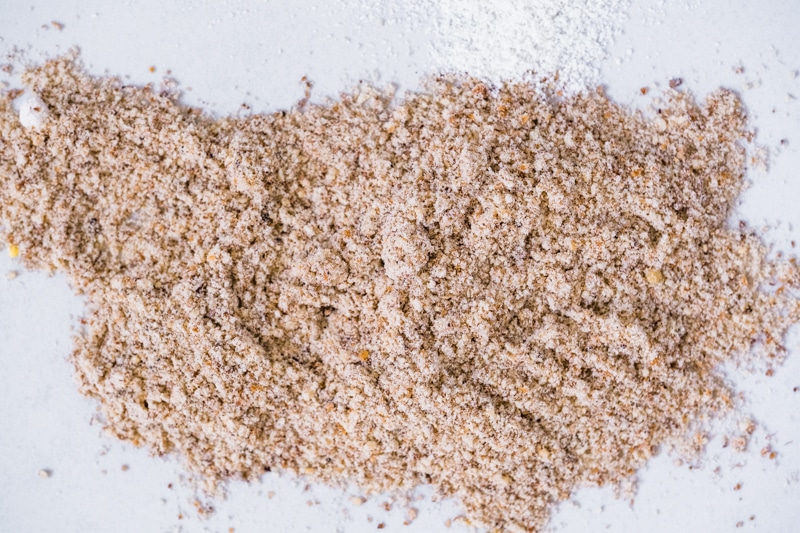
The sweet potato and konjac flours
While I did buy sweet potato flour several times, I never published any recipes of what I made with it. I remember that sweet potato flour worked really well as a breading for chicken, mixed with almond or cassava flour.
Konjac flour is made of a type of yam from the konjac plant. It is best known as the magical zero-calorie, a very low-carb ingredient in konjac or shirataki noodles. At home, you can use it as a thickener or emulsifier.
I am slightly skeptical about its benefits, and I wouldn’t make it a central part of my diet. Be careful with its use as it presents a choking hazard.
Guide to lectin-free, gluten-free flours: the banana/vegetable flours
The green banana and green plantain flours
As resistant starches, they have a great nutritional profile, although there is still a lot of controversy over how they should be eaten: raw or cooked. While green banana flour is great to add to smoothies and make raw fat bombs or sweet treats, I wouldn’t eat uncooked green plantain flour.
I don’t use these two flours too much, but I have a few green banana flour recipes. Dr. Steven Gundry, the pioneer of the lectin-free movement, has a Pancake Flour Mix made with green banana flour.
The cauliflower flour (keto-friendly)
To be honest, I’m not sure what to make of this. It’s true, it’s a very low-carb option, and it can be useful for those on keto programs.
It does lend a specific taste to baked goods, though. The best way to use cauliflower flour is to make those low-carb pizza crusts and pie crusts.
I have a tortilla recipe using cauliflower flour in my cookbook if you want to try it out. In some Whole Foods stores, you will find it packaged under their own brand, 365.
Guide to lectin-free, gluten-free flours: the grain flours
There are three ancient grains considered lectin-free and gluten-free: sorghum, millet, and teff. Although we don’t know them that well in the Western world, they are common crops in Africa and Asia and staples for billions of people worldwide.
Millets were also common in Europe until they were replaced by corn and wheat.
Find out how I use these lectin-free flours to make sourdough bread with this Beginner’s Guide to Baking Gluten-Free Sourdough Bread. From creating your starter to baking your first loaf, this guide is designed to demystify gluten-free sourdough baking and ignite your passion for this artisan craft.
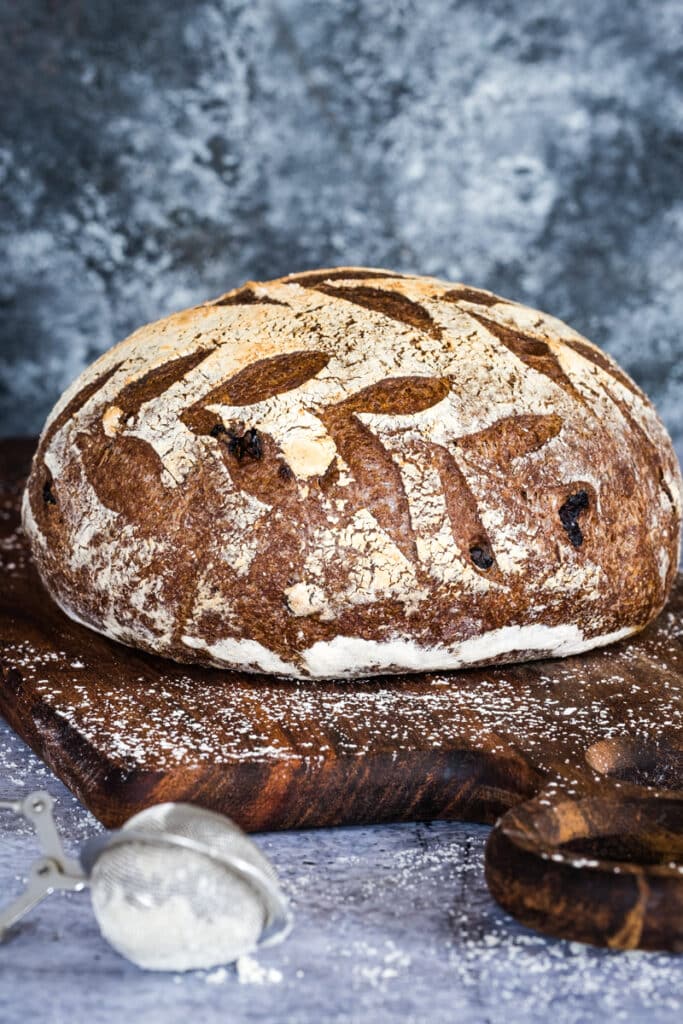
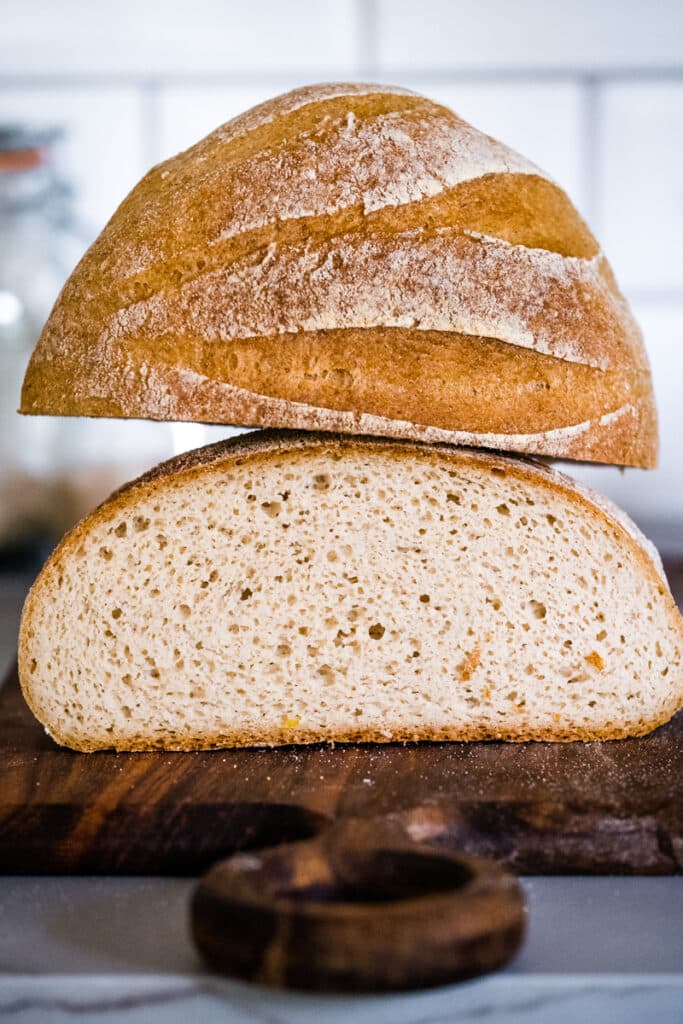
Sorghum flour
Sorghum flour, also known a jowar flour, is obtained from ground sorghum grain. It is commonly used in India to make jowar roti, an unleavened flatbread made with only hot water, sorghum flour, and salt.
Sorghum flour is also very popular for lectin-free, gluten-free baking, especially for making sourdough starter and sourdough bread.
With a mild and slightly sweet and nutty taste, sorghum flour reminds me of graham and spelt flour, and I use it with a few other lectin-free flours to make Sugar-Free ‘Graham’ Crackers / Digestive Biscuits.
It is, in my opinion, the closest to whole wheat flour, especially in this Sorghum Bread Rolls recipe.
Sorghum is also the main flour in this moist, fluffy and delicious nut-free carrot cake: Sugar-Free, Nut-Free Carrot Cake.
And for more recipes using sorghum flour, check out our sorghum guide, with 10+ Sorghum Flour Recipes (Gluten-Free).
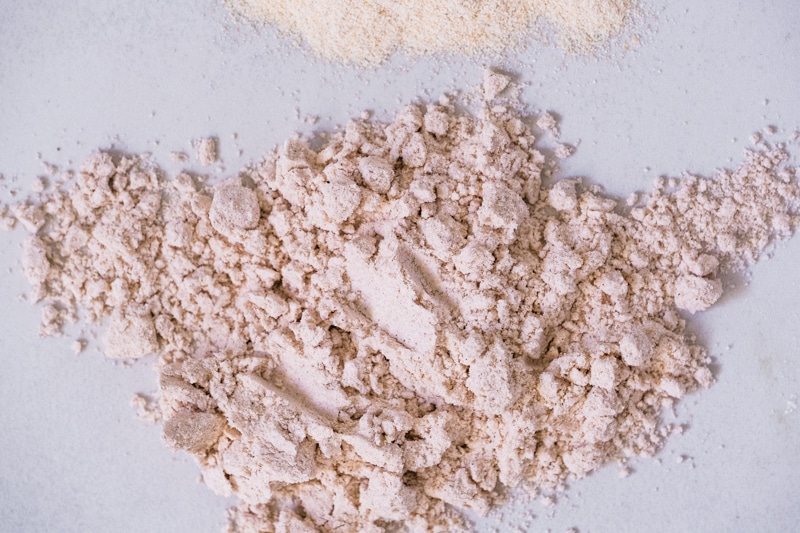
Millet Flour
Humans have consumed millet for thousands of years. They are still essential crops in many countries in Asia and Africa. In Romania, my home country, millet was the staple grain before the introduction of wheat and corn, and it was an important ingredient for different types of bread and porridge in the Roman Empire. Today, millet is also very popular in Ukraine and Russia.
Millet flour is excellent for making lectin-free and gluten-free sourdough bread, like this Millet and Sorghum Bread. It’s also a mild-tasting flour, but with a slight bitter undertone.
Old millet flour can get really bitter, so make sure you buy good quality flour and store it in a cold and dark place.
For a great cornmeal replacement, grind the millet at home, in a Nutribullet with a milling blade.
I find homemade ground millet an excellent replacement for cornmeal, like in this faux cornbread: Walnut and Millet Bread.

Teff flour
Teff has long been considered a gluten-free flour but only recently has been added to the list of lectin-free flours by Dr. Steven Gundry. Like the above cousins, this grain is a staple in many countries worldwide, used to make flatbread, sourdough bread, and porridge.
Teff flour is used to make the famous injera, the Ethiopian fermented flatbread, but if you eat injera in Ethiopian restaurants in the western world, ask the chef what they made it with, as they will mix teff with other flours, like buckwheat.
I like to add teff flour to porridge. I have a recipe in The Living Well Without Lectins Cookbook. It’s a delicious vegan, lectin-free bread that reminds me of rye bread, only better tasting: Teff-Hazelnut Banana Bread, page 61.
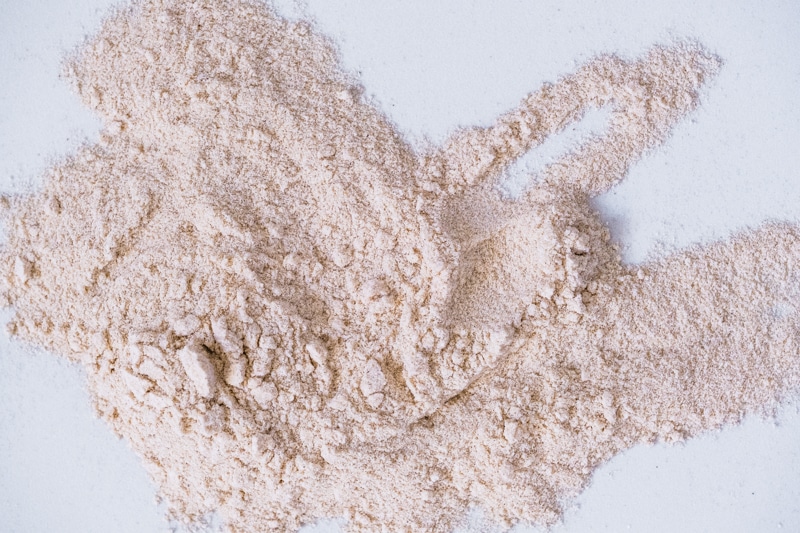
Guide to lectin-free, gluten-free flours: the nut flours
Chestnut flour
Chestnut flour is one of my favorite flours on this list; however, it is not a keto-friendly flour. I’ve always loved chestnuts, and the flour tastes as good.
My favorite way of using chestnut flour is to make lectin-free, gluten-free crepes. No other flour or recipe gave me the same results. The texture is perfect for crepes, and its nutty, sweet, earthy taste makes adding any sweetener redundant.
Since chestnut flour tends to get clumpy when added to liquid, I recommend using a blender. I use chestnut flour for making sweet treats because it adds so much natural sweetness. More recipes using chestnut flour below:
- Chestnut Pie with Root Vegetables
- Rhubarb Breakfast Cake
- Sweet Potato Brownie, Vegan, Low-Histamine
- Lectin-Light Adzuki Beans Brownie with Olive Oil and Macadamia Nuts
The only downside of chestnut flour is that it is relatively hard to find, especially in the US, and it’s more pricey. Other than the Amazon link above, check Nuts.com, for when they have it in stock.
In Europe, chestnut flour is common and easier to find in specialty stores or gluten-free sections in supermarkets, usually imported from Italy.
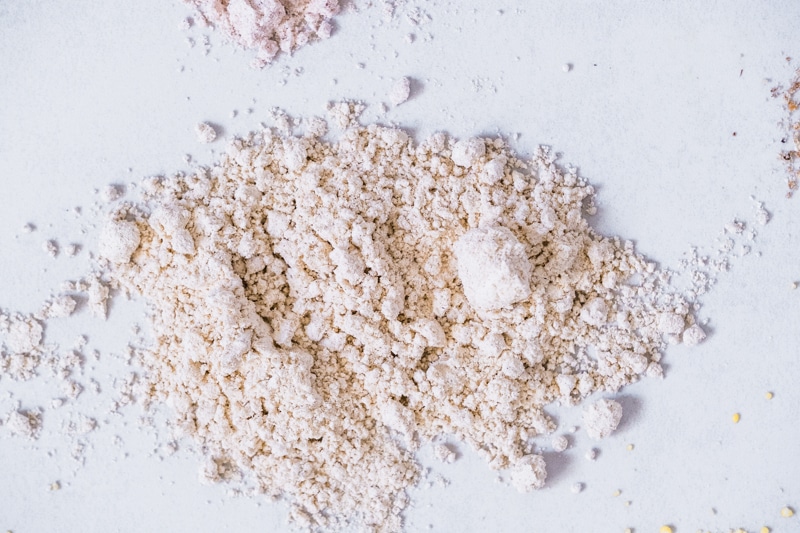
Coconut flour (keto-friendly)
Coconut flour is made of dried coconut meat and the first lectin-free flour I ever tried to bake with. It is quite special because it’s very dense and absorbs a lot of liquid. That’s why you should never substitute with other flour 1:1. Coconut flour can absorb four times more liquid than other lectin-free, gluten-free flours.
While I rarely make anything using just coconut flour, it is part of most of my flour mixes. So many of the recipes on my website have coconut flour as an ingredient.
One of the best recipes I’ve ever made using just coconut flour and no eggs is the Keto Naan Bread from The Plant Paradox Family Cookbook, by Dr. Steven Gundry. It turns out that when mixed with hot water, coconut flour can make a sticky dough that can be used to make flatbread and doesn’t need eggs to bind.
Like all nut flours, coconut flour has a very low glycemic index, so it’s a ‘keto flour’. That’s why it’s very popular within the low-carb, keto community. Try these Easy Keto Bread Rolls with Walnuts and our Low-Carb Coconut Flour Tortillas.
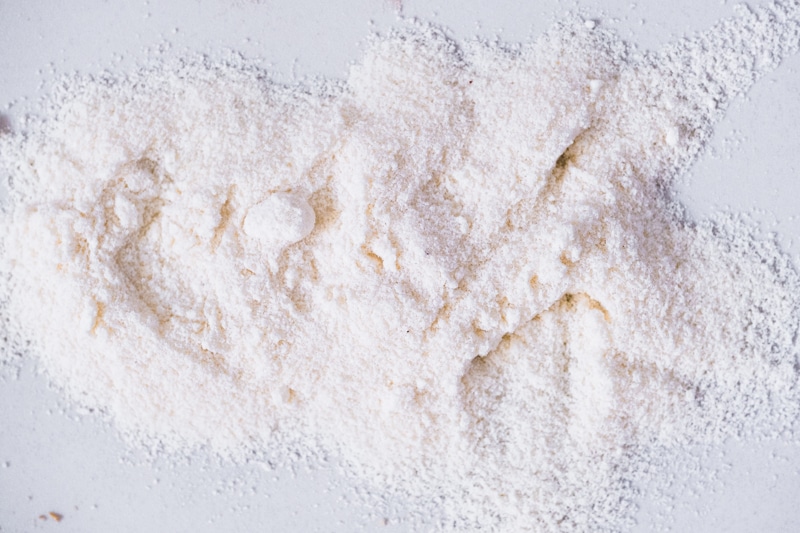
Almond Flour (Keto-Friendly)
Almond flour, made from blanched almonds, is one of the most common lectin-free, gluten-free keto flour for baking, and one of the most overused ingredients in grain-free diets. While almonds can be healthy for us, especially because they are low-carb, too much of them can lead to sensitivities.
One of the reasons why people develop reactions to almonds is that most of the non-organic almonds coming from California are treated with propylene oxide (PPO), a super-toxic chemical that is banned in organic agriculture. That’s why, whenever possible, I buy organic almond flour. Or you can look for disclaimers on labels that PPO is not used. And if it wasn’t enough of a concern, 85% of conventionally grown almonds are sprayed with glyphosate.
I personally prefer raw, organic almonds from Spain. And I try to use almond flour moderately. That being said, almond flour remains one of the best flours to bake fluffy cakes that you won’t even know are lectin-free.
Almond flour is not the same as almond meal, which is made with whole almonds, including the skins, which are full of lectins. When in doubt, look at the color. Almond meal will have brown speckles, while almond flour is white-ish.
My Happy Birthday Carrot Cake is made with a mix of almond flour and coconut flour, making this cake a keto-friendly cake.
A lot of my recipes include almond flour, but some have it as the main ingredient:
- Lectin-Free ‘Oatmeal’ Chocolate Chip Cookies
- Rosemary Almond Crackers with Cranberries and Hemp Seeds
- Citrus Blueberry Lectin-Free Scones
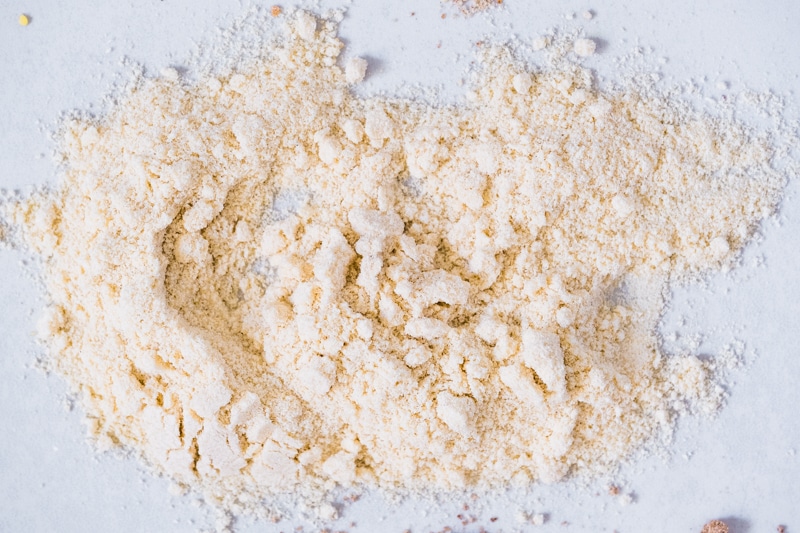
Hazelnut flour (keto friendly)
Hazelnut flour is made from ground hazelnuts. It can be bought or made at home, with a food processor and a milling blade. I’ve seen many types of hazelnut flour, from the very fine one, like in the picture below, to more coarse types. They are all great for baking and one of my favorite nut flours to use in baking.
Walnut and pecan flour (both ‘keto flours’), although not commonly found in stores, can be an option when cooking with nut flours. They can also be made at home, as they are basically ground nuts.
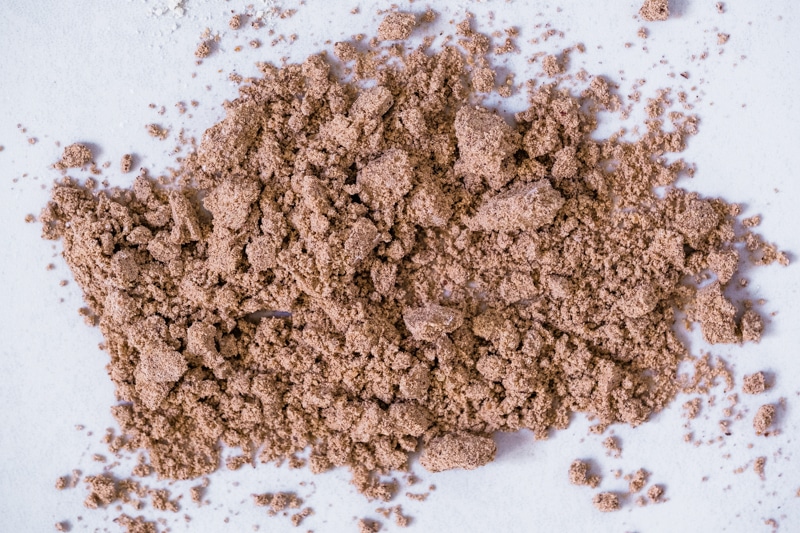
Acorn flour (keto-friendly)
The acorn is the nut of the oaks, one of the few true botanical nuts (like hazelnuts and chestnuts), and it’s full of nutrients and fiber. But what is more interesting to me is that acorn flour is considered a keto flour with benefits in regulating blood sugar.
You can make acorn flour at home, but the safest way is to buy it because acorns need to get through a few processing steps to become palatable and easy to digest. Texture-wise, acorn flour resembles hazelnut flour but is not as flavourful. It still has a nutty, earthy taste.
Although used for thousands of years across the globe, acorn flour is not very popular in present times. Maybe one of the most interesting uses is as a coffee substitute. Acorn flour is mixed with spices like cardamom, cinnamon and nutmeg and brewed like coffee.
From my experiments with acorn flour, I love it in combination with sorghum semolina to make breading for schnitzels or nuggets, and you can use it as pancake flour.
I like to make a sort of bread-like pancake that can be perfect for breakfast. The ingredients are 2 pasture-raised eggs, 1/2 cup coconut milk, 1 tablespoon MCT oil, spices like cinnamon, cardamom, inulin powder, 1 tablespoon carob powder, 4 tablespoons shredded coconut, 1/2 teaspoon baking powder. Treat them like pancakes, but the texture will be more bread-like. For a softer texture, add less shredded coconut.
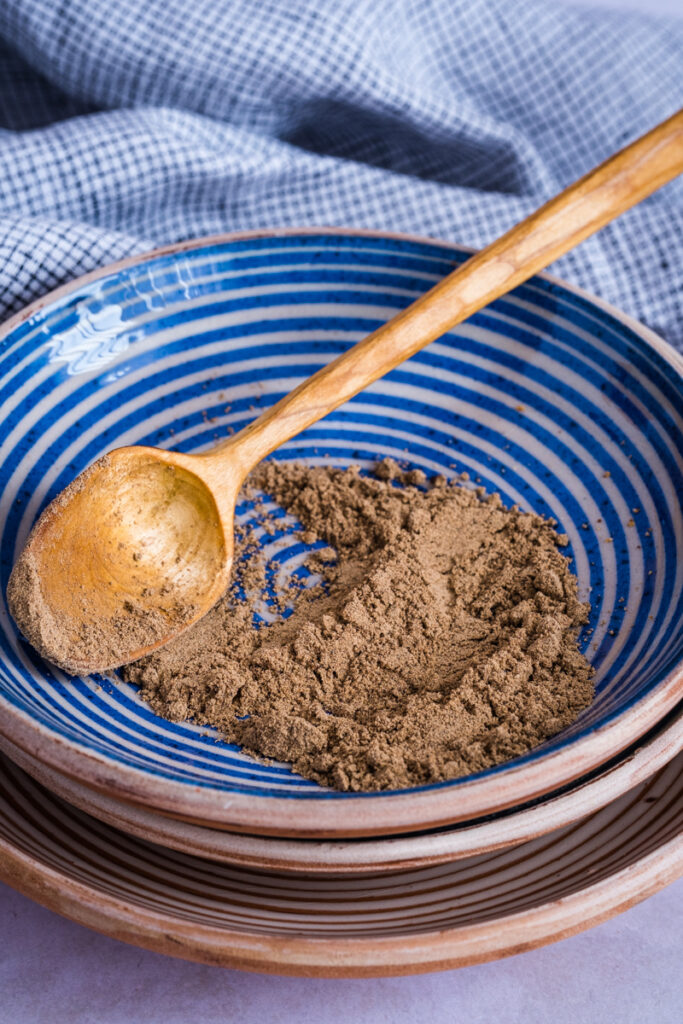
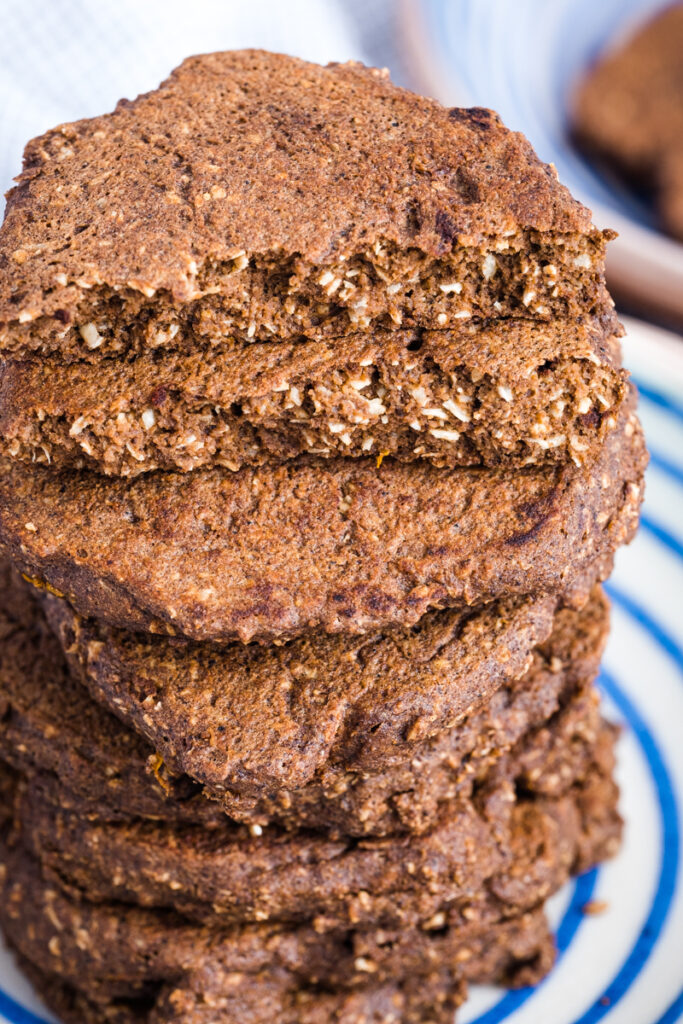
Guide to lectin-free, gluten-free flours: the seed flours (keto friendly)
Flaxseed meal, perfect for egg-free recipes
Flaxseed meal is ground flax seeds. Many people don’t know humans can’t digest flaxseeds. So for us to get the benefits of eating flaxseeds, they need to be ground.
Flaxseed meal is easy to find in stores. However, it easily goes rancid when ground. The best is to use a coffee grinder or a Nutribullet with a milling blade to grind them just before using.
They are a perfect substitute for eggs in vegan recipes. To make a flax egg, mix one tablespoon flaxseed meal with 2 1/2 tablespoons water and add to your baking mix.
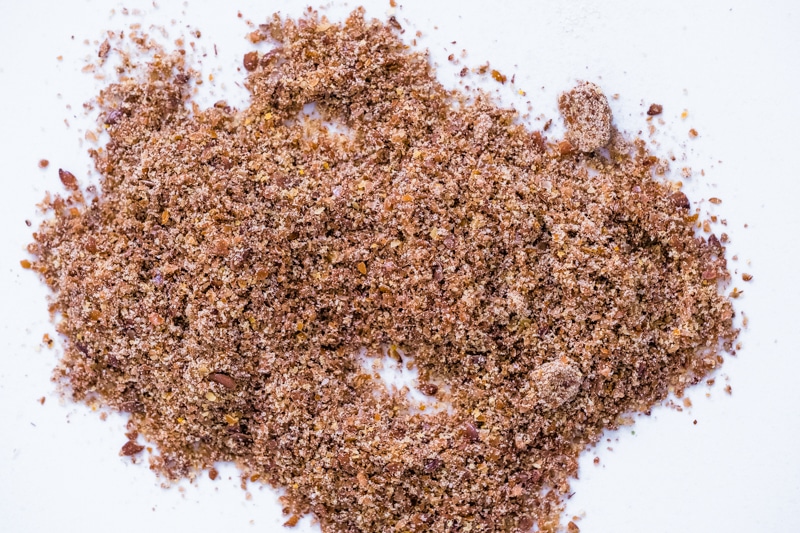
Psyllium husk
Psyllium husk is lectin-free. It is a form of dietary fiber obtained from the husk of the seeds of the Plantago Ovata plant. They are well known for treating constipation, but they are used in making cereals and as food thickeners in the food industry.
Psyllium husk is a great addition to a lectin-free, grain-free baking mix, especially when not using eggs.
I used both psyllium husk and flaxseed meal to make my Everyday Lectin-Free Bread.
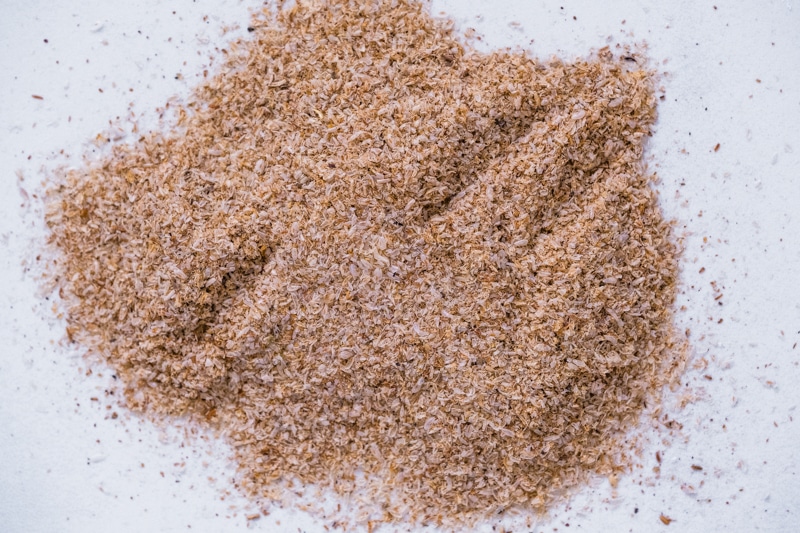
Hemp powder or hemp flour
Hemp powder is ground hemp seeds. You find hemp powder in stores, but it’s straightforward to make at home, in a blender with a milling blade.
Hemp powder is not really a binder, but a nutrient-dense addition to any flour mix, rich in protein and plant omegas. I use ground hemp in my Wholesome Rosemary Bread Rolls in my book – The Living Well Without Lectins Cookbook.
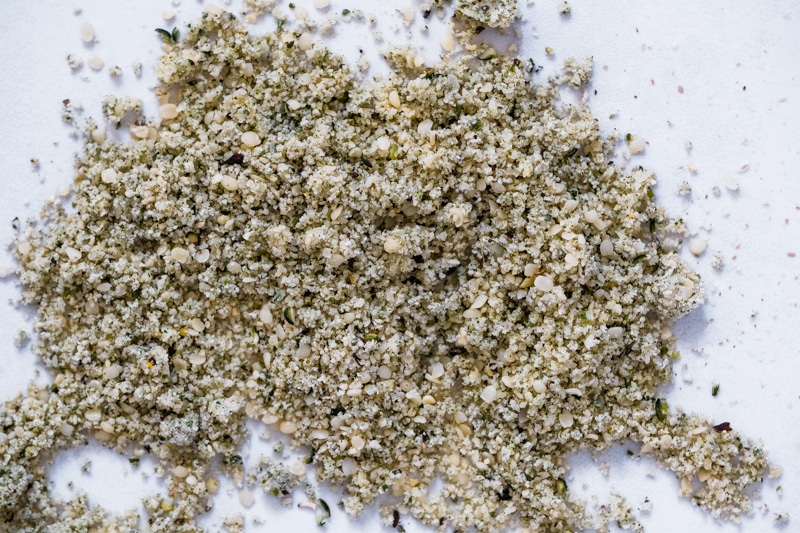
Sesame seed flour
I have never used sesame seed flour, but I would use it the same way I use hemp seeds: to add more nutrition to the final product. I would grind the seeds in my Nutribullet.
Also, a great alternative for people who can’t use nut flours and as an addition to keto-friendly flour mixes.
DIY Mix: all-purpose lectin-free, gluten-free flours
To get good results when baking lectin-free and gluten-free food, you need to create a mix with flours with different properties and nutritional profiles. The below mix is just an example of how I think when combining flours.
The final product’s nutritional profile, texture, and taste are the main criteria for choosing the flours I’ll use, but availability also plays an important role. I created many of my lectin-free gluten-free recipes while putting together something with a few available ingredients.
The mix will also depend on what your wet ingredients will be. If you don’t use eggs, you will have to use a binder such as a flax egg (see above how to make it). Sweet potato puree can also make a great binder. And I used it a lot in my baking, both savory and sweet.
- Cassava flour – 1/2 cup – 118g – 4.1oz – 0.260lbs
- Tigernut flour – 1/2 cup – 74g – 2.5oz – 0.162lbs
- Almond flour – 1/4 cup (pressed down) – 49g – 1.7oz – 0.108lbs
- Coconut flour – 2 tablespoons – 25g – 0.8oz – 0.054lbs
- Arrowroot / Tapioca flour – 1 tablespoon – 21g – 0.070lbs
If you need a lower-carb flour mix, add 1/2 cup almond flour and only 1/4 cup cassava flour. If you completely remove cassava flour and replace it with almond flour, you may increase the arrowroot/tapioca starch from 1 tablespoon to 2 tablespoons. You may want to mix the almond with hazelnut flour in this case.
TIP: If you find a recipe that you really like, you can make the dry mix in advance; that will help with the preparation process. I did this for friends and family who were unfamiliar with lectin-free, gluten-free baking. And it was easy for them just to take the mix out and combine it with the wet ingredients.
What about substitutions
Substitutions are available most of the time, but substitutes are not recommended when the recipe only uses one type of flour as the main ingredient – like my chestnut crepe recipe or my cassava tortilla recipe.
Substitutions work best for flour mixes, where more types of flour are used in small quantities. However, as mentioned above in the text, be careful with coconut flour and even banana flour, as they absorb more liquid than the other flours.
When it comes to using flour as breading for chicken and vegetables or as a binder in fish cakes, you can easily do swaps. For example, I go with what I have available when making breading for my chicken schnitzel. Sometimes I use almond and cassava, sometimes tigernut and cassava, sometimes I add almond flour. I used sweet potato flour in the past for breading, and it was great.
Same with fish cakes or meatballs. You can use cassava, almond, tigernut, or even sweet potato flour, maybe a little bit of tapioca or arrowroot.
How to make baking powder at home
Since we talk about flours and their use for baking, I would like to address the baking soda – baking powder topic. Some recipes use only baking soda, but that requires an acid somewhere in the recipe, like lemon juice, apple cider vinegar, buttermilk, or yogurt to activate the baking soda.
Store-bought baking powder is usually made with three ingredients: baking soda, cream of tartar, and corn starch. To make baking powder at home, mix:
- two parts cream of tartar
- one part baking soda
- one part arrowroot starch
If you make it just before baking, there is no need to add the starch. Use the starch only if you make a larger quantity in advance to prevent clumping.
If a recipe requires one teaspoon baking powder, replace it with a mix of 1/2 teaspoon cream of tartar and 1/4 teaspoon baking soda.
Can you buy a lectin-free flour mix?
Can you buy a lectin-free flour mix when you don’t feel like navigating your way through all these types of flour? Fortunately, yes, you can. Check out the below option in the US:
GUNDRY MD MULTI-PURPOSE LECTIN-FREE FLOUR MIX
You will get more than 30% off and save up to $36.00 when buying three bags or more of Gundry MD Multi-purpose lectin-free flour mix in my Ambassador store.
Outside the US, your best bet is to look for keto-paleo options, as these are most probable to contain the right ingredients.
How creative can you get while using these lectin-free, gluten-free flours?
I wanted to share a little story with you at the end of this article. I think it would be useful, especially if you feel intimidated by all these new ingredients.
When I made the pictures for this article, I used about 2, 3 tablespoons of each of the flours I had in my pantry. After I finished photographing, I didn’t have the heart to waste them. So I gathered as much as I could from the board (of course, it was clean), mixed it with some extra ground millet I had, and used this as a lectin-free flour mix to bake the Walnut Millet Bread.
I used all these flours, and the result was amazing, even though it was not what I had used in the original recipe.
This is an invitation to explore and work with these flours like an alchemist. In my experience, you can repurpose any failed cake or bread.
For more dessert recipes using these flours, check out our 30+ Sugar-Free Dessert Recipes round-up.
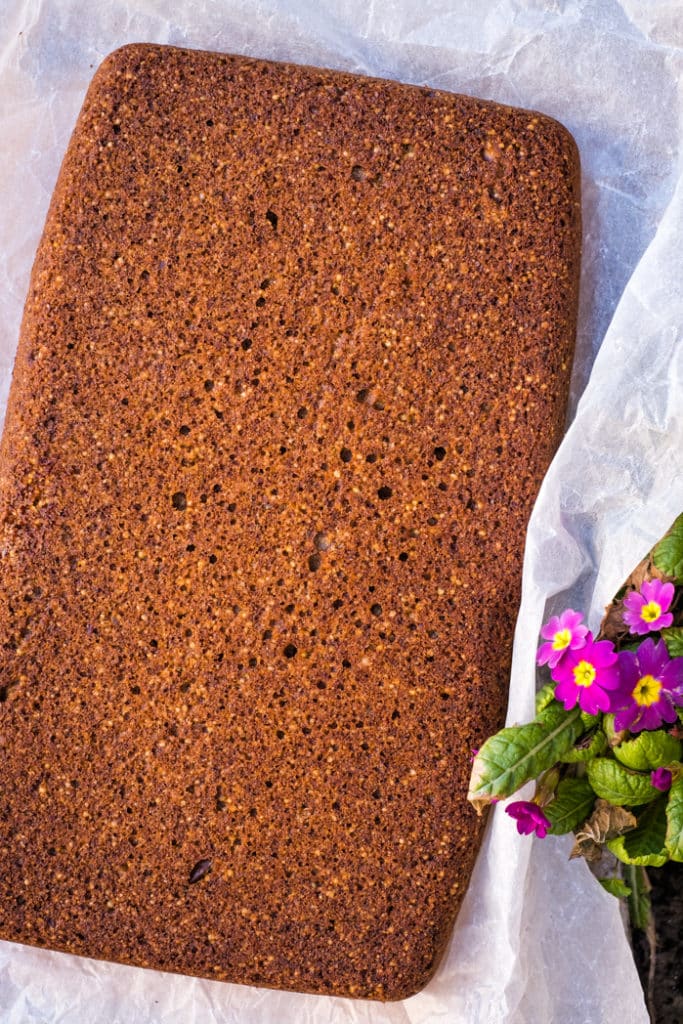
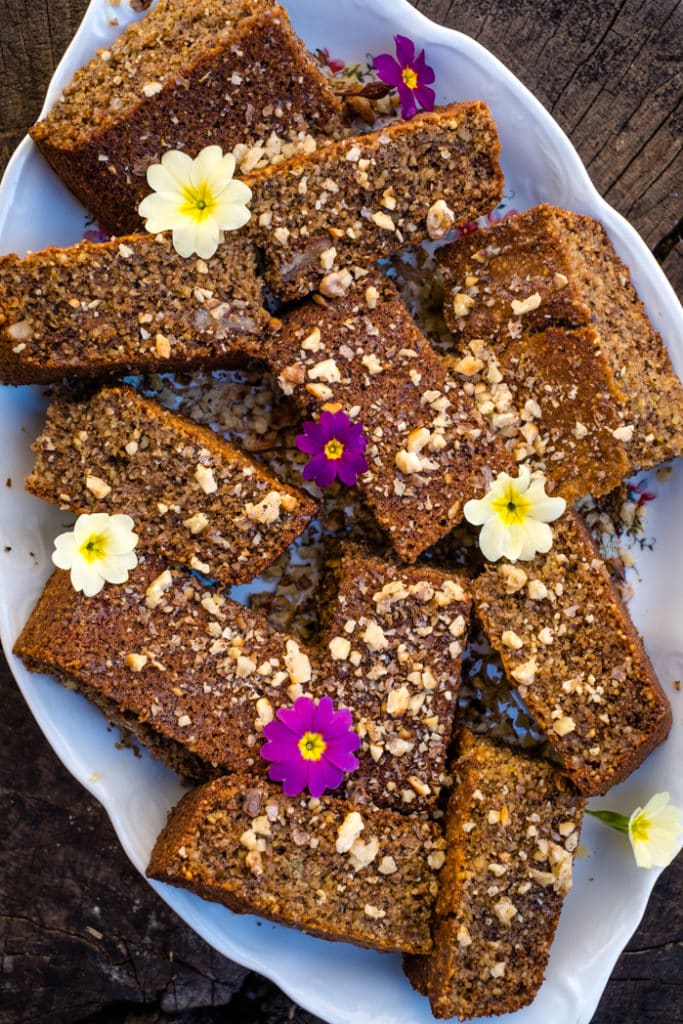
I hope this guide to lectin-free, gluten-free flours was useful. If you have any questions or need more information, please comment below.
For celiacs
One last note for those of you who have celiac disease or have severe allergic reactions to gluten. Please always check for cross-contamination with gluten. Even if a product is naturally gluten-free and lectin-free, it doesn’t mean it cannot be contaminated with gluten.
This is a useful guide: How to Eliminate Gluten from Your Diet: A Step-By-Step Guide.

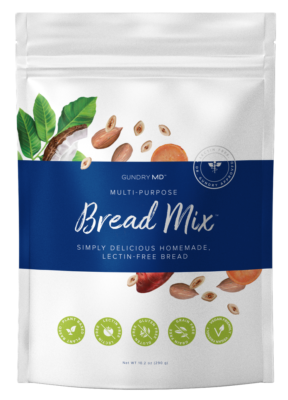

33 Comments
Nora
April 13, 2024 at 4:24 pmHi ..,Thank you for all this. I am looking to make an awesome all purpose gluten lectin free flour for sourdough breads, bagels, naan breads. But I’m needing to avoid almond flour. What would be a good replacement ?
Claudia
April 14, 2024 at 3:56 amHi Nora! Are you referring to a multi-purpose mix based on the one I gave in this article? If so, I would say sorghum flour is a great multi-purpose flour and can replace almond flour. -Claudia